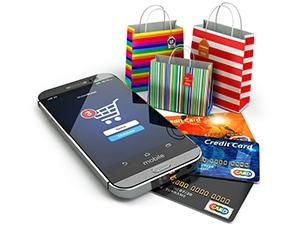
The 2016 Nielsen mobile shopping, banking and payment survey shows SA's vast mobile adoption has made South Africans more receptive to making payments, doing banking and shopping on a mobile device.
The survey polled 30 000 people with online access in 63 countries, including SA. The company aimed to understand how mobile devices are influencing shopping, banking and payments.
The report found South Africans are outpacing global nations in terms of online mobile adoption. Over 84% of local respondents said they like being connected anywhere, anytime, compared to 74% globally. 78% of South Africans said they strongly or somewhat agree their mobile device has improved their lives, compared to 70% globally.
In the banking sector, local respondents were particularly responsive, with 67% saying they use their phone to monitor spending and manage finances, compared to 32% of global respondents.
George Kalebaila, IDC senior manager for telecoms, media and Internet of things in Africa, says: "South Africa's banking industry is moving at pace with developed economies in terms of digital transformation, and we expect as the digital ecosystem matures, we will see more and more transactions and services move to the digital platforms, radically transforming the way we interact and conduct our lives.
"And mobility without a doubt is a key driver of this transformation, especially when applied in conjunction with other emerging technologies, such as the Internet of things, analytics, augmented/virtual reality and social media."
In October, Juniper released research that said over two billion mobile users globally will have used their devices for banking purposes by the end of 2021, compared to 1.2 billion this year.
Leading the way
Accessing account information and paying bills are already regular activities for South Africans. 67% said they checked an account balance or recent transaction on their mobile device in the past six months and 50% said they have paid a bill using their phone.
"Emerging markets, such as South Africa, have set the pace when it comes to mobile payment adoption and use. With sizeable unbanked populations that depend heavily on cash, mobile payments fill an important gap and have been the focus of extensive innovation efforts that will rely almost exclusively on digital tools for managing and moving money," says Nielsen South Africa country head Bryan Sun.
Some 55% of South Africans said they mostly do not use cash anymore and 54% make payments using their phones.
However, 57% are concerned about security and 23% see the cost of data as a barrier to doing more online banking transactions.
Kalebaila says: "Mobile banking in South Africa is quite established, driven by the high penetration of smartphones, improving mobile and WiFi broadband, and also with major banks pushing this channel aggressively.
"Mobile banking has emerged as the leading digital channel preferred by many users and is having an impact on the operating model of all major banks, leading to reduction in brick-and-mortar branches. In fact, mobility is driving the digital transformation we are seeing in the banking industry, and we should expect further disruption in this area in the medium- to long-term."
Just browsing
More than half of South African respondents said they use their mobile device to research a product or service online. One in three use an app to make purchases and nearly 40% use their devices to look for deals, make better shopping decisions, or make shopping trips quicker or more efficient.
However, 59% of South Africans remain concerned about payment security.
Kalebaila says mobile shopping in SA is yet to become mainstream.
"What is evident though is that mobile has become a major discovery channel, with many users first accessing and checking and comparing prices on the mobile platform before completing the purchase either online or in a physical store.
"In 2015, mobile shoppers accounted for 3% of the total e-commerce spend in SA and this is expected to increase to 7% in 2016. This is contrasted with 86% of those accessing the Internet doing so on mobile devices in 2015, which will reach 88% in 2016," says Kalebaila.
Share